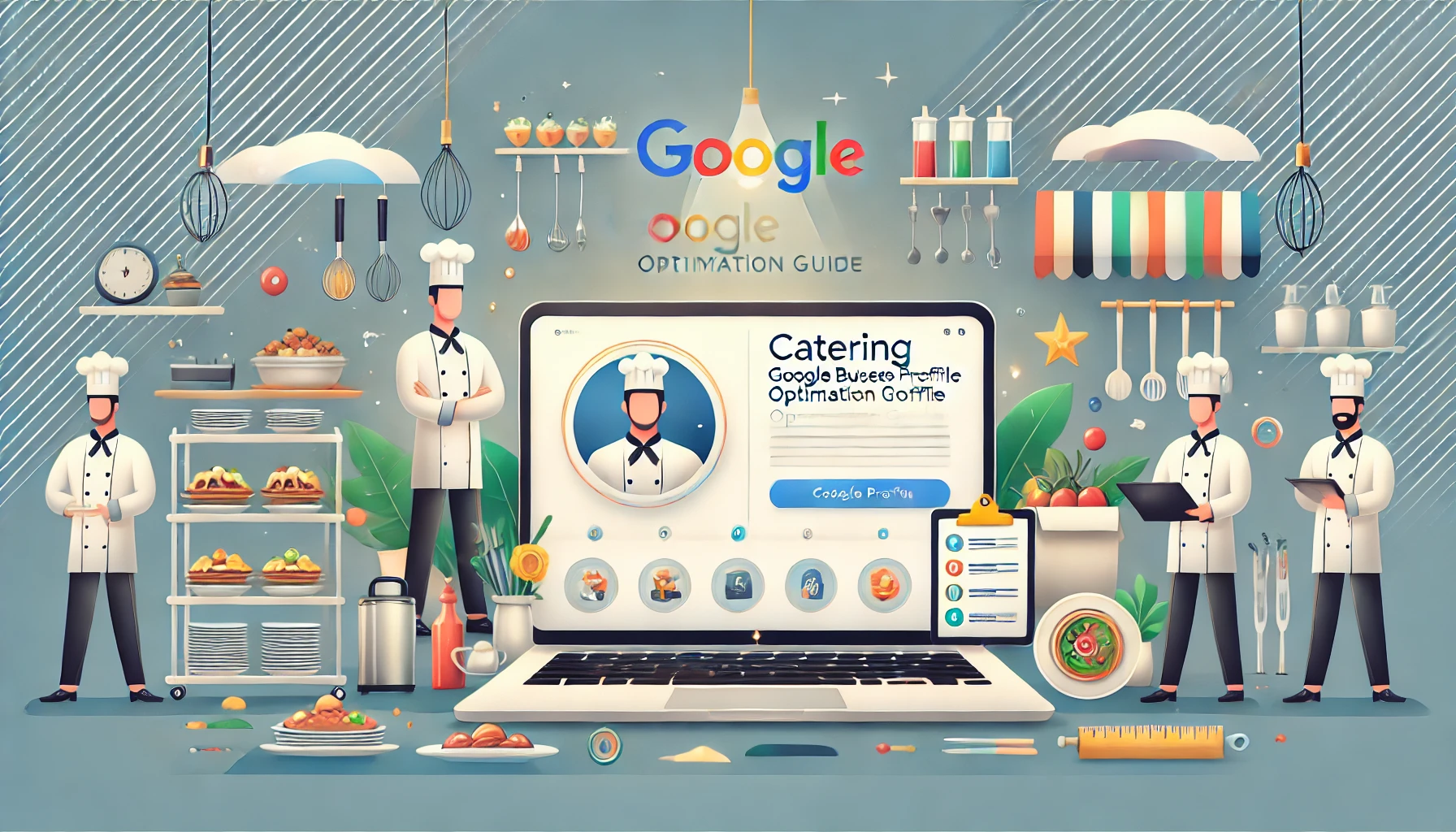Creating effective location pages can transform your catering business’s online presence, connecting you with clients in specific areas. Including location-specific keywords, landmarks, and details about services can significantly improve search engine visibility and customer engagement. By showcasing your unique offerings clearly, you can attract potential clients who are searching for catering services in their neighborhood.
A well-designed location page doesn’t just improve your visibility; it also enhances trust and credibility with your audience. Client reviews, testimonials, and photos from past events provide social proof, reassuring potential clients of the quality service they can expect. Additionally, clear calls-to-action guide visitors towards making inquiries or bookings directly from the page.
Investing time in creating robust location pages means not only addressing immediate client needs but also paving the way for long-term success. Accessibility improvements and user-friendly navigation make it easy for clients of all abilities to find and engage with your services. Compliance with legal standards and frequent assessments of page performance ensure you meet industry standards and continuously enhance your business outreach efforts.
Key Takeaways
- Location-specific keywords enhance visibility.
- Testimonials build trust with potential clients.
- Clear calls-to-action encourage client engagement.
Creating Location Pages: Overview
Location pages are crucial for boosting local visibility and enhancing search engine optimization. They effectively target location-specific keywords and provide potential customers with essential information about your catering business’s services and venues.
Importance of Location Pages
Location pages are vital for improving local SEO by targeting long-tail, location-specific keywords. This can help your catering business appear prominently in local search results, drawing in more customers.
They also establish credibility by providing detailed information such as address, contact details, and operating hours, ensuring that visitors have all the necessary data to reach you easily. Including customer reviews and testimonials can further enhance trust and reliability.
Location pages also serve to distinguish each of your service areas. By detailing the specialties and unique offerings available at each location, customers can better understand the specific advantages of choosing your catering services in their area. This tailored approach can lead to increased customer engagement and conversions.
Best Practices for Structure and Layout
Crafting effective location pages requires a thoughtful approach to structure. Each page should have a unique URL and meta descriptions to differentiate one location from another. Use headers to break content into easy-to-navigate sections.
Incorporate an interactive map that highlights your catering venue, making it easier for customers to find you. Large, clear images of your locations can also enhance visual appeal.
Include essential details such as contact numbers, email addresses, and service areas using a straightforward layout. Ensure that these details are easily accessible, preferably at the top of the page.
Utilize local content tailored to each service area by addressing specific customer needs and preferences. This not only boosts SEO but also creates a connection with the local community.
Optimizing for Search Engines
To effectively draw in more clients for your catering business, strategic search engine optimization (SEO) is crucial. Focusing on keyword research, on-page optimization, and local SEO practices can significantly enhance your online visibility.

Keyword Research for Catering Services
Start by identifying key phrases that potential customers might use when seeking catering services. Use tools like Google Keyword Planner or SEMrush to discover popular search terms. Focus on location-specific phrases, such as “catering services in [your city],” to target local audiences.
Create a list of keywords that align with specific services you offer, like “wedding catering” or “corporate event catering.” Incorporate these into your website content to match user search intent effectively.
On-Page SEO Elements
On-page SEO focuses on optimizing web pages to boost search engine rankings. Key elements include meta tags, headings, and keyword density. Ensure each page title includes a primary keyword and accurately reflects its content.
Use clear, descriptive HTML tags for headings. Maintain a keyword density of around 1-2% to naturally integrate keywords without stuffing. Use images and include alt text with relevant keywords to enhance SEO further.
Local SEO Strategies
Boosting your local online presence involves both Google Business and local directories. Optimize your Google Business Profile with accurate details like address, phone number, and opening hours.
Create dedicated landing pages for each service location. This helps search engines understand the areas you cover. Encourage satisfied customers to leave reviews on your Google Business page, as positive reviews can improve your local search ranking.
Content Development
Focusing on crafting engaging and visually appealing content is essential for a successful catering business location page. This can lead to stronger connections with potential clients and highlight your business’s unique offerings and strengths.

Writing Engaging Content
To capture and maintain the attention of your audience, your content must be both informative and captivating. Start by identifying the preferences and interests of your target audience, which can be achieved through customer surveys or market analysis. Tailor your content to address their needs and preferences, such as emphasizing unique menu items or exceptional service.
Using clear and direct language helps convey your message effectively. Highlight your business’s key features with bullet points or short lists for easy readability. Incorporate testimonials and client success stories to build credibility while expressing the benefits of choosing your services.
Using Visuals and Media Effectively
Visual elements are vital in creating an attractive and memorable location page. High-quality images of your culinary creations can whet the appetite of potential clients. Use photographs to showcase beautifully plated dishes, bustling events, and the expertise of your staff.
Consider using video content to give viewers a behind-the-scenes look at your kitchen or special events, which can further engage them. Ensure that all media is optimized for fast loading times, as slow pages might deter visitors. Balancing text with visuals helps maintain interest and makes important information more digestible.
Connecting With Your Audience
Connecting effectively with your audience involves engaging with them where they are most active and understanding their unique preferences. Focusing on local events and celebrating the contributions of local staff can enhance community engagement.
Addressing Local Events and Festivals
Participating in local events and festivals is an excellent way to connect with potential clients and showcase your catering services. Identifying popular events in your community allows your business to be visible where large gatherings occur. This helps to build relationships with event organizers and potential clients.
Consider setting up booths or kiosks at festivals to offer samples of your specialties. Providing exclusive discounts or promotions during these events can encourage attendees to consider your services for future events. Attending such events also gives you a chance to gather feedback directly from customers.
Maintaining a visible presence at local events ensures your catering business is front of mind for attendees planning future events. Connect with event organizers to explore sponsorship opportunities or collaborations that can increase your brand’s exposure.
Highlighting Local Staff and Services
Acknowledging and showcasing the contributions of local staff can make your business more relatable to the community. Feature stories about your team members and highlight their expertise on your website or through social media.
Introducing staff members on social media platforms with engaging photos or videos helps personalize your brand. Sharing testimonials and experiences from local clients can also reinforce the quality of your services and build trust with your audience.
Locally sourced products and ingredients appeal to customers who value supporting local businesses. Highlight sections of your menu that include these local items and consider partnerships with local suppliers. This not only supports your community but also strengthens your reputation as a locally-focused catering service.
User Experience and Accessibility
Optimizing user experience and ensuring accessibility can significantly influence how potential clients interact with your catering business online. Achieving smooth navigation and fast load times, along with a fully mobile-optimized site, makes it easy for users to access crucial information quickly and efficiently.

Navigational Ease and Page Load Speed
Navigational ease is vital for guiding users effortlessly through your website. A well-structured layout with intuitive navigation elements ensures visitors can find essential information, such as menus and contact details, with minimal effort. Consider using clear, descriptive labels for menu options and maintaining a consistent navigation bar across pages.
Fast page load speeds are equally important. Slow websites can frustrate users, causing them to leave the site prematurely. Optimize images to reduce file sizes, enable browser caching, and use content delivery networks (CDNs) to improve load times. These strategies will create a streamlined experience, keeping users engaged and more likely to explore your offerings further.
Mobile Optimization
With an increasing number of users accessing websites on mobile devices, mobile optimization is crucial for a catering business. Responsive design ensures that your site adjusts seamlessly to different screen sizes, providing a consistent experience across all devices. Implement large, easy-to-tap buttons and concise text to facilitate interaction without zooming or excessive scrolling.
Effectively utilizing mobile optimization can enhance user satisfaction and increase the likelihood of conversions. Ensure that essential functions, such as quote requests or event bookings, are easily accessible and functional on mobile. Regularly testing your site’s performance on various devices can help identify and resolve any mobile compatibility issues, ensuring a smooth experience for all users.
Social Proof and Testimonials
Effective use of social proof and testimonials can significantly enhance the credibility of your catering business. They help potential clients feel more comfortable with choosing your services by showcasing previous customer experiences and tangible success stories.
Incorporating Customer Reviews
Customer reviews are a powerful tool in building trust with potential clients. Display reviews prominently on your website to ensure they are easily accessible. Consider using a mix of written testimonials, star ratings, and even video reviews to cater to different preferences.
Invite satisfied clients to share their experiences, focusing on specific aspects like food quality and service. Platforms such as Google and Yelp are popular for gathering reviews, providing potential clients with an authentic perspective of your catering services.
Organize reviews by event type or service to make it easier for new clients to relate to their specific needs. Display notable positive comments as highlight features on your webpage. A testimonials page is effective for maintaining and presenting this feedback in an organized manner. Regularly update this section to keep it fresh and relevant with new customer feedback.
Leveraging Case Studies
Case studies provide in-depth narratives demonstrating your business’s ability to meet specific client needs. They offer potential customers a clear picture of how your services could be tailored to their events. Highlight the challenges faced, strategies implemented, and positive outcomes achieved.
Include details such as menu customization, specific dietary accommodations, and client satisfaction results. Case studies can showcase events like weddings, corporate functions, or any niche events to appeal to diverse clientele. Use visuals, including photos or infographics, to enhance the storytelling and engage viewers.
Publishing these examples on your website or linking them in marketing materials adds credibility. For more ideas, look to these examples of social proof for inspiration in crafting persuasive narratives tailored to your audience’s interests.
Call-to-Action Strategies
Creating effective call-to-action (CTA) strategies can significantly enhance user engagement on your catering business’s location pages. Strategic placement and thoughtful design are integral to maximizing conversion rates, encouraging potential clients to inquire about your services.

Effective CTA Placement
Positioning is vital for a successful CTA. Placing CTAs in intuitive locations ensures they catch the viewer’s eye. Some ideal spots include the top section of the page, where users naturally look first, and near engaging content that preliminarily sells your services.
Above the fold placement (the part of the webpage visible without scrolling) is especially effective. CTAs here attract those who skim content. It’s also beneficial to repeat CTAs throughout the page, providing multiple interaction opportunities without being overwhelming. Consistency in placement helps build user habit, encouraging clicks initially and with return visits. Utilizing logical placement strategies can therefore enhance user interaction significantly.
Color and Design for Conversion
The design of a CTA has a direct impact on its effectiveness. A CTA button should stand out visually from the rest of the webpage. This often requires a contrasting color scheme. For instance, using a vibrant color that contrasts well with your page’s background can draw more attention, making the CTA button the focal point.
Design consistency is also key. Keeping the style of CTA buttons uniform across the entire site promotes familiarity and trust. Adding visual cues like arrows or subtle shadows can further enhance visibility. Testing varied design elements like text size, font style, and button size with A/B testing methods can help determine which design yields the highest conversion rate for your audience.
Legal Considerations and Compliance
When building location pages for your catering business, ensuring legal compliance is crucial. This involves creating robust privacy policies and addressing liability through comprehensive terms of service.
Privacy Policies and Data Usage
Privacy policies must address how client data is collected, used, and stored. Transparency in data handling builds trust with your clients. Clearly outline what personal information is collected when users interact with your location pages and explain the purpose of data collection.
Implement security measures to protect sensitive data. Consider complying with regulations such as the GDPR if your business serves international clients. Providing clear communication about data usage helps mitigate potential issues. Regularly reviewing and updating your privacy policies keeps your business aligned with current legal standards.
Terms of Service and Liability Issues
Terms of service are legal agreements outlining the rights and responsibilities of both the business and its clients. Include sections on the services provided, user conduct, and limitations of liability.
Detail any compensation or refunds in cases of unsatisfactory service and address cancellation policies. Ensure clarity to avoid misunderstandings and potential lawsuits. It’s advisable to consult legal professionals to craft terms that uphold your business interests while protecting customer rights.
Regularly revising your terms of service can help prevent legal disputes. Clear communication and well-defined terms make it easier to handle any issues that may arise.
Measuring Success
To determine the effectiveness of location pages for your catering business, focus on analyzing metrics that assess page performance and make strategic adjustments based on these insights. This approach ensures that your pages attract potential clients and lead to successful conversions.
Analyzing Page Performance
Understanding how your location pages perform is key to success. Key performance indicators (KPIs) include metrics like page views, bounce rate, and conversion rate. Use analytics tools to track these metrics. A high bounce rate could indicate irrelevant content or poor user experience, while a low conversion rate may suggest issues with the call-to-action or form layout.
Review engagement metrics such as average session duration and scroll depth to assess if visitors find the content valuable. Customer feedback can provide additional insights into user experience and expectations. By regularly monitoring these indicators, you can pinpoint areas that need enhancement to better meet customer needs.
Adjusting Strategy Based on Insights
Use the insights gained from data analysis to refine your approach. For example, if a particular location page underperforms, consider updating its content to better match user search intent. Conduct A/B testing on headlines, images, or calls-to-action to determine what drives engagement and conversions.
Identify patterns from successful pages and apply these strategies to less successful ones. For example, if reviews or testimonials are prominent on your top-performing pages, incorporate them across all location pages. Continually optimizing based on analytical feedback not only improves user experience but also boosts search rankings and conversion rates.
Frequently Asked Questions
Effective location pages are crucial for a catering business, helping to attract and retain customers. By optimizing for search engines and including targeted content, these pages enhance visibility and differentiate your catering company from competitors.
What are the best practices for creating effective location pages for a catering business?
Clearly define the area your business serves. Include specific local keywords and customer testimonials relevant to each location. Ensure contact information is accurate and easy to find. Add images of past events in the area to make the page more engaging.
How can I optimize my catering business’s location pages for search engines?
Use local SEO techniques such as incorporating location-based keywords in the title tags and meta descriptions. Make use of structured data to enhance search visibility. Build backlinks from local businesses and community organizations to boost credibility and search rankings.
What content should be included on a catering business’s location page to attract more customers?
Include a detailed description of services offered in each location. Post photos of events or venues in the area. Feature testimonials from local customers. Provide a map with the company’s operating radius. Highlight any special services unique to the location to appeal to potential clients.
How can location pages enhance the online visibility of my catering business?
By targeting specific geographic areas with tailored content and keywords, location pages improve your site’s relevance in search results. Engaging content and local backlinks elevate your business’s profile, making it easier for potential customers to find you when searching for catering services in their area.
What strategies can I use to differentiate my catering company from competitors on our website?
Showcase your unique catering services and specialties. Highlight customer reviews and case studies of successful events. Offer exclusive deals for specific locations. Incorporate multimedia elements like videos of your team at work to provide a distinct identity that sets you apart from competitors.
How do I ensure my catering business’s website appeals to my target market?
Conduct market research to understand customer preferences and trends. Craft location-based content that speaks directly to local clients. Utilize responsive design to ensure a seamless experience on all devices. Use clear calls to action and easy navigation to guide potential clients through the decision-making process.






